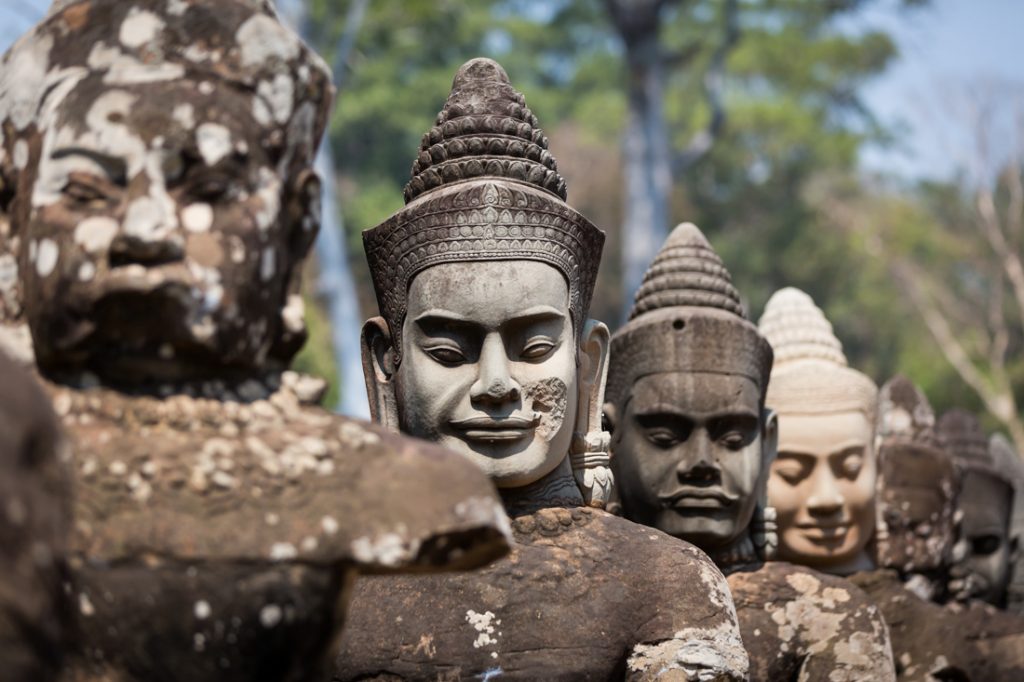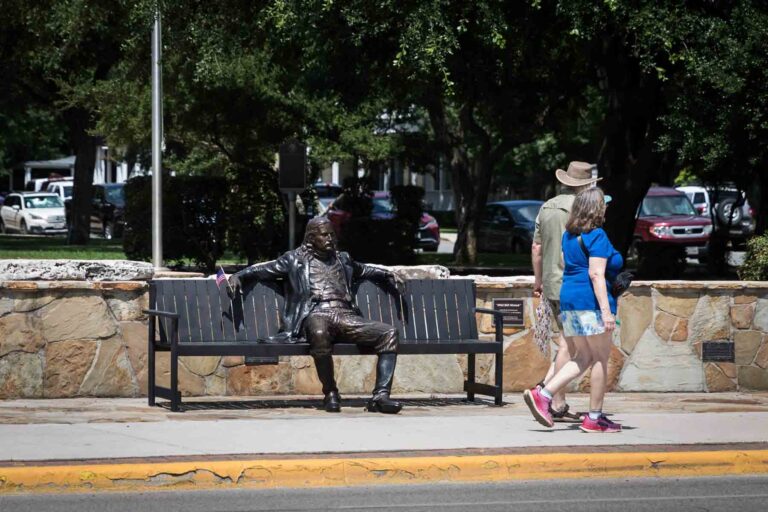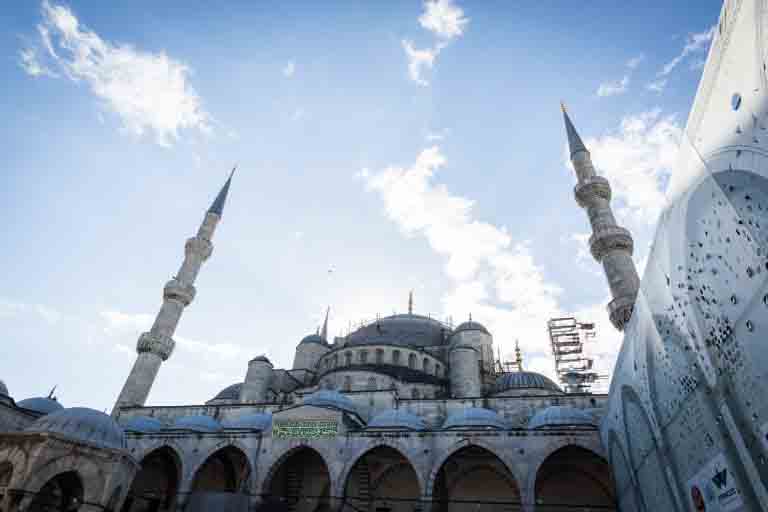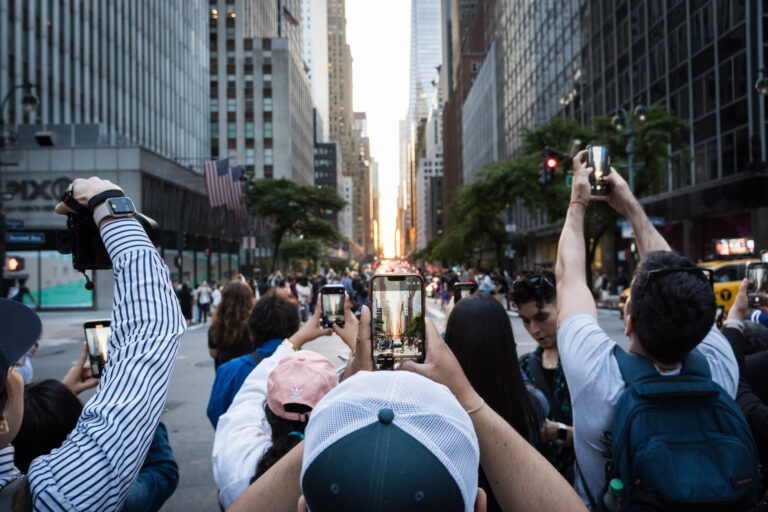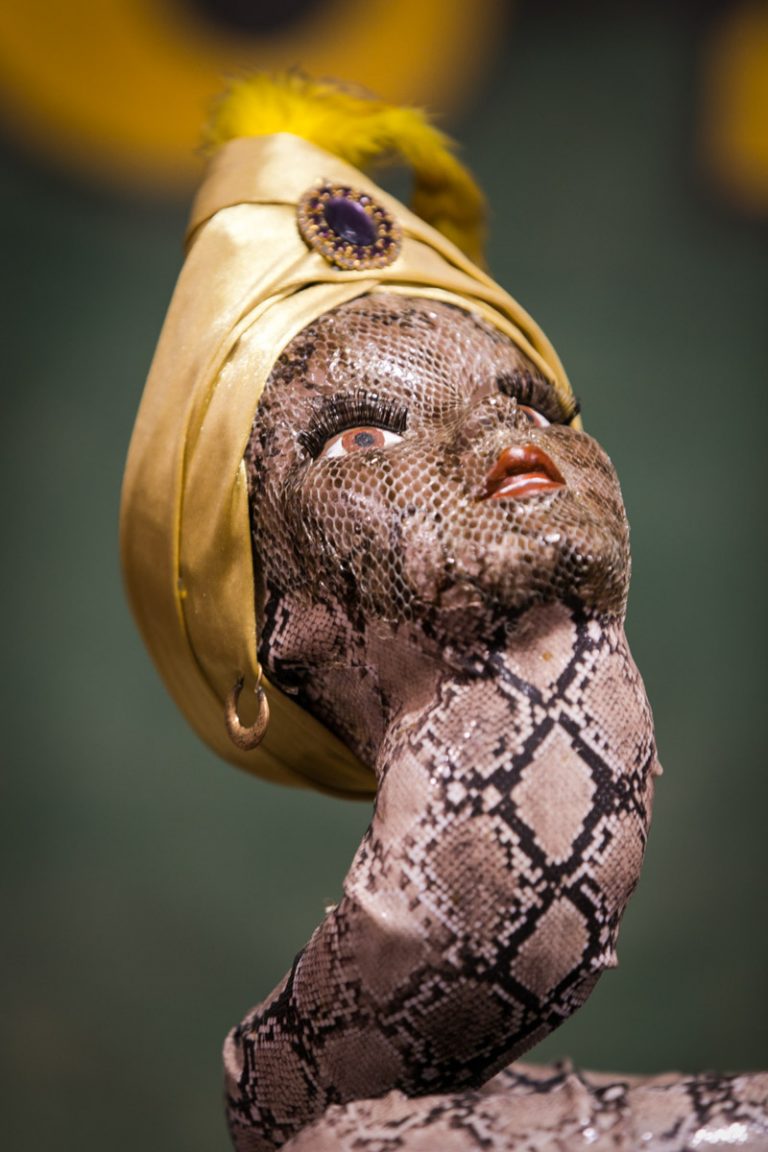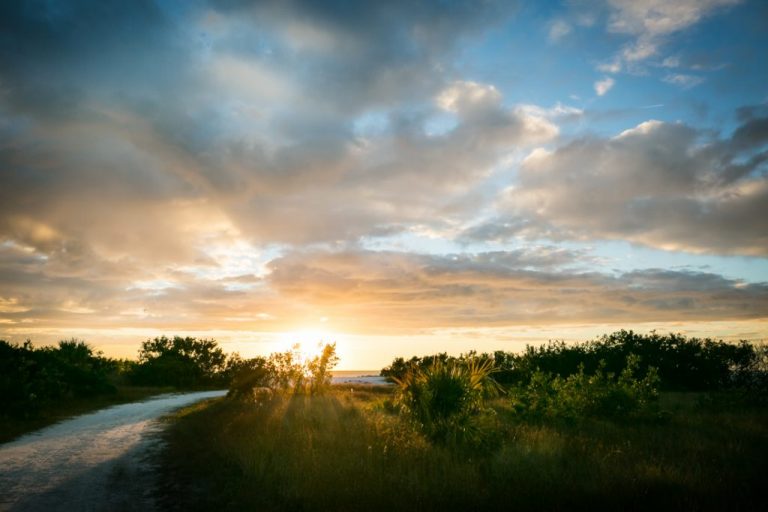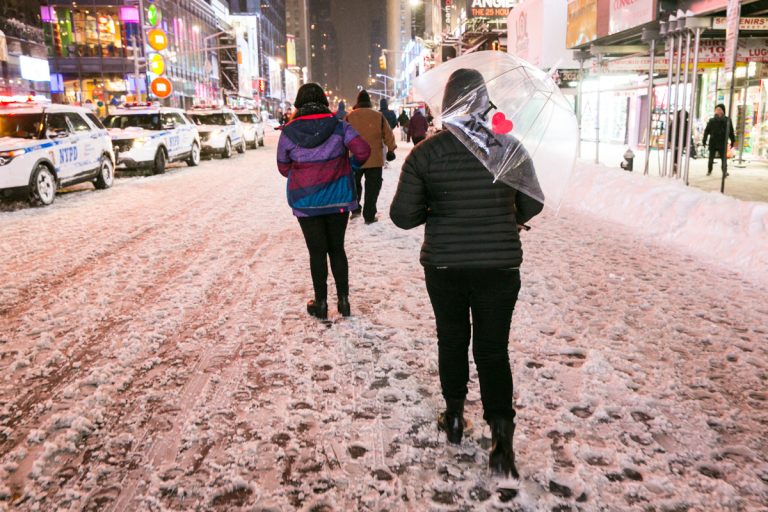Angkor Wat Travel Tips
Tips for Traveling to Angkor Wat From a Photographer’s Perspective
When I was researching my own trip to Cambodia, I did not find a lot of Angkor Wat travel tips from a photographer’s perspective. Even though Angkor Wat is one of the most photographed places in all of the world, I never found a key set of instructions saying how to best capture this iconic spot. In today’s blog I remedy that with a list of Angkor Wat travel tips from THIS photographer’s perspective.
Angkor Wat Travel Tips: When to Go
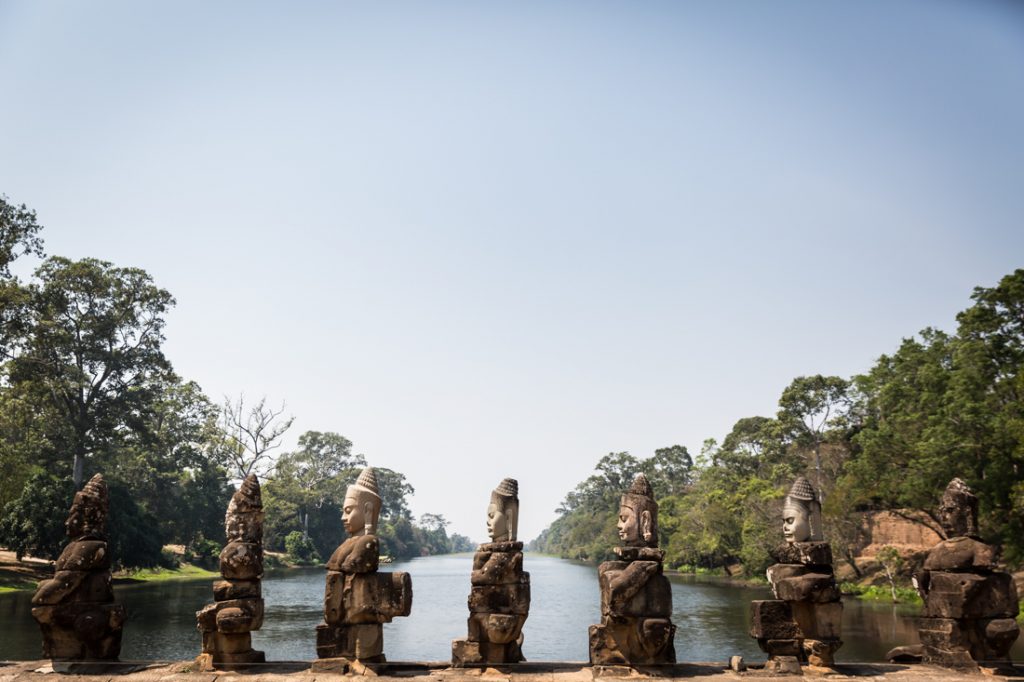
I based my own trip timetable largely on the fact that the New York City wedding season is slow between January and March. As such, I normally have no work for this period and so I normally flee the cold weather. I had planned to spend the majority of my three-month trip in Vietnam, and I knew that traveling during the Tet holiday was not advised. Tet, is the Vietnamese version of Chinese new year. It is the main holiday in Vietnam, and most businesses shut down for an entire week. The businesses and hotels that are open are outrageously expensive. Furthermore, for travelers going without Vietnamese contacts within the country, Tet can be a rather boring experience since all attractions are closed. Thus, I decided to start my trip just after Tet, which was celebrated February 14 to 20 in 2018.
I wanted to start in Cambodia since it would be warmer there than in northern Vietnam. I planed it so that by the time I arrived in northern Vietnam the weather would be much more pleasant. Thus, I didn’t have to carry a coat for one spot and a pair of shorts for the other. Cambodia gets hot and humid like you would not believe. The week I was there, every day was 90° and above with sweltering humidity. I did not have any rain, however. Note that the rainy season begins in May. On the negative side, if you are looking to photograph the floating villages, the best time to arrive is during the rainy season due to the increased water levels. Furthermore, there are pros and cons to whenever you go, and I was there during the high tourist season. Prices were probably more expensive than they would’ve been if I had traveled during another time of the year. If cost and crowds are considerations, why not go during ‘bad’ weather? As proved during my trip last February to Death Valley, cloudy skies bring beautiful a unique quality to your images.
Finally, I also wanted to start my trip in Cambodia because I knew it would be the most challenging of all the countries I was visiting. I had read online about the difficulties with tuk tuk drivers and I wanted to get this headache out of the way early. Siem Reap, as you can read in my earlier review, has a lot of challenges, but I planned ahead and put these at the start of my trip when I was the most fresh.
Angkor Wat Travel Tips: How Many Days to Visit
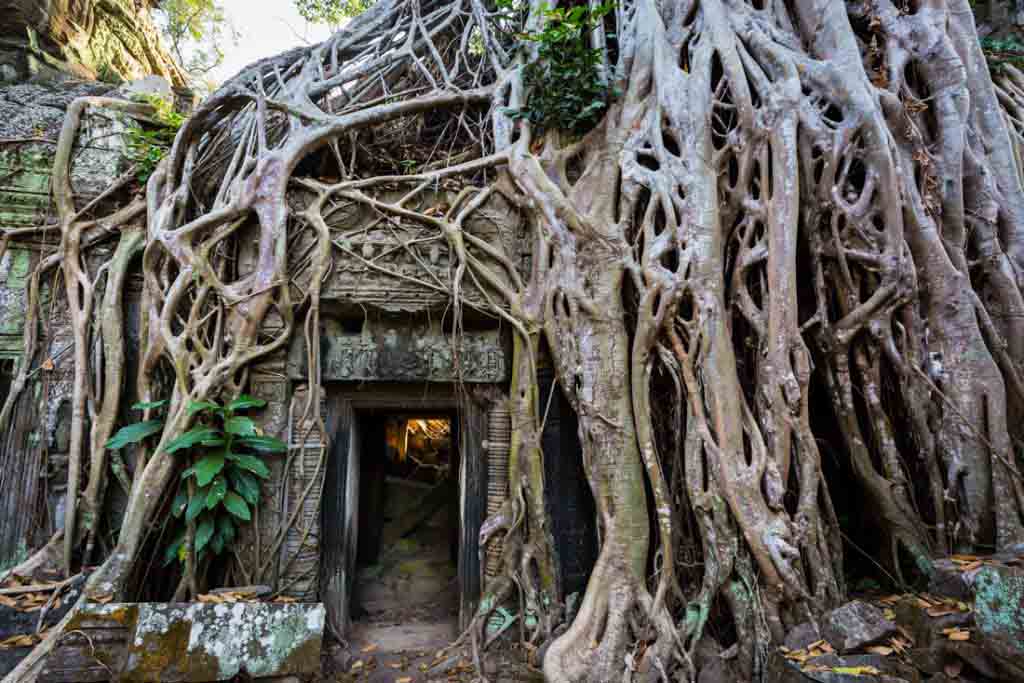
I visited Siem Reap for seven days and purchased a seven-day pass for the Ankor Wat temples. Sure, if you are there just to visit the temples then three days may be enough. But if you’re there to photograph the temples, then in my opinion seven days is the bare minimum in order to do the place justice. I treated this trip as the adventure of a lifetime, and I wanted to make sure I had enough time to leisurely see every temple and visit multiple times if need be. I made the right choice.
As of August 2018, the cost for passes to visit Angkor Wat are as follows:
- One-day pass: $37
- Three-day pass: $62
- Seven-day pass: $72
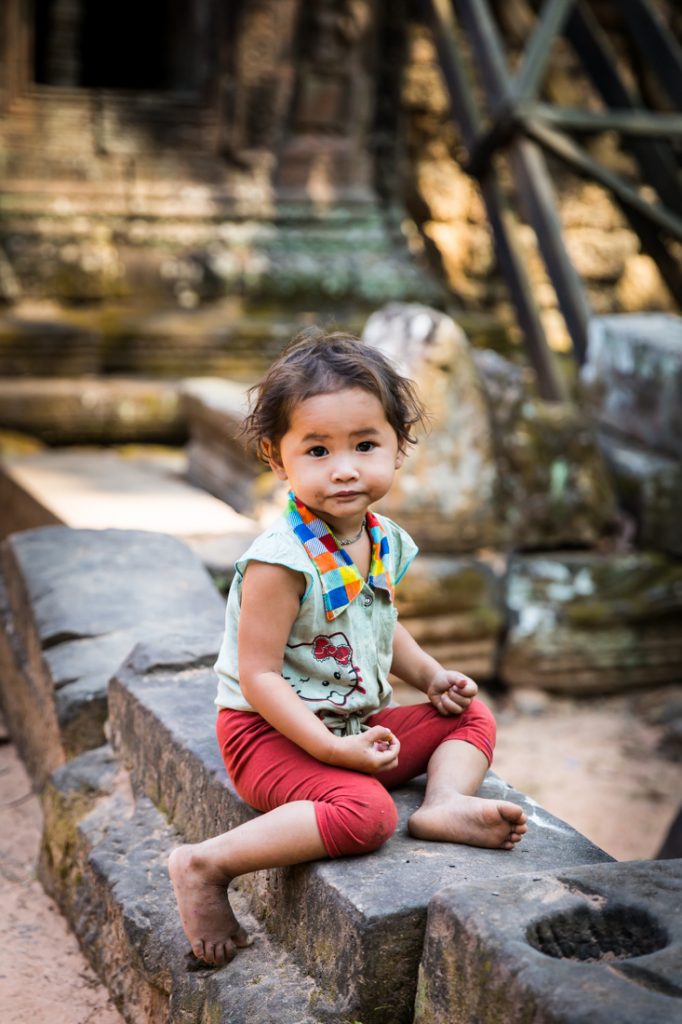
Most people think of Angkor Wat as one, lone temple in the jungle. In fact it is the world’s largest religious monument, and there are hundreds of temples spread out over 402 acres of tough terrain. But it’s not just the fact that there are several temples to photograph. At some point during your trip you will simply be sick of seeing temples and need to take a break. If that means going to a temple in the morning and then spending the afternoon at your hotel or at another attraction, with a seven-day pass you don’t feel guilty because you’re not spending every waking moment at the temples. Furthermore, the light for certain temples is best at sunrise, and for other temples it is best at sunset. If you have enough time then you can visit these temples more than once and at different times of the day. Bear in mind that all of the temples judged best for sunrise/sunset will be most popular at those specific times, so you may want to visit these temples again at a time that is less crowded. For instance, I visited the Preah Khan temple during both sunrise – when it was judged to be the best – and at sunset, when it was the least crowded. As you might have guessed, I got my best photos at sunset.
When you get your pass, the attendant will take your photo so your pass is not transferable to any one else. I did not have any security guards approach me when I visited Angkor Wat, but I understand that the temple guards take the issue very seriously. Do not try and sneak in to Angkor Wat or to resell your pass to anyone else. Also, bear in mind that if you are heading to Angkor Wat for the first time at sunrise, make sure to get to the visitor center right when the center opens. You have to have your pass purchased ahead of time before you visit for sunrise. I’ll have more details on sunrise strategies at Angkor Wat in another post, but know that I was there when the doors opened. After I got my pass, the line was out the door and I am certain that all of those people missed sunrise. Don’t be those people.
Angkor Wat Travel Tips: Tuk Tuk Drivers
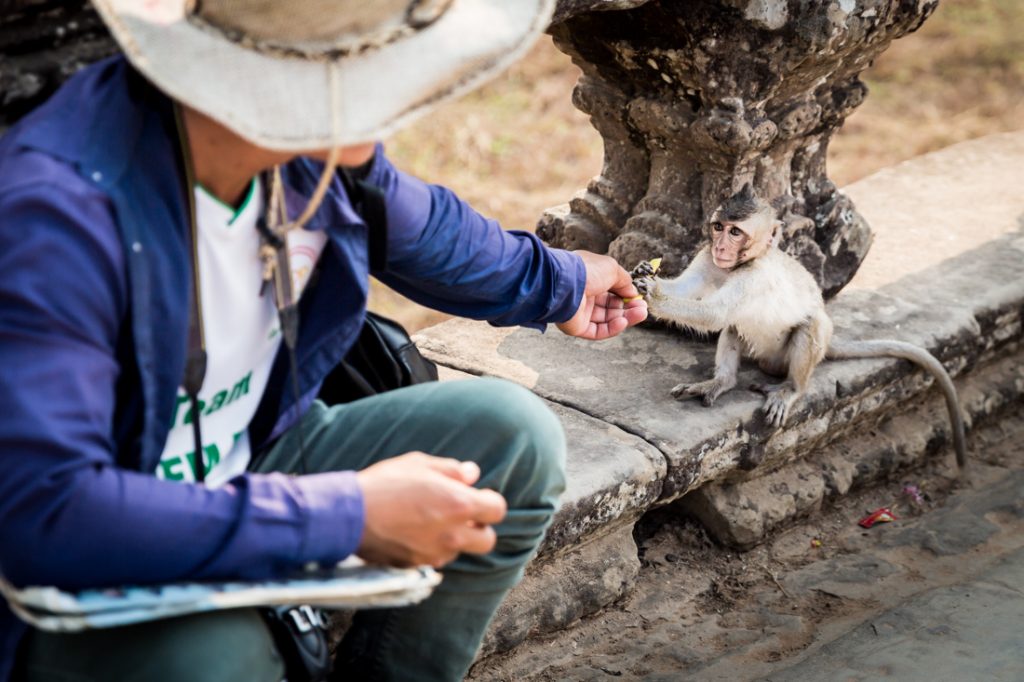
The Angkor Wat temple complex is not a walkable place. To get to each temple you need to hire a tuk tuk driver. On my first day photographing the temples, I hired a tuk tuk to take me to Angkor Wat for sunrise. From there I walked to the Bayon Temple, and then to the Preah Khan temple. If you look on Google maps, it says it will take only an hour and a half to make the walk. Nope. It took all day, and I was exhausted at the end of it. I’m glad I did it and I did get to see some smaller sights that might have been missed had I not hoofed it, but it was still a tiring walk.
To upgrade your trip’s efficiency quotient, I recommend hiring a driver. It takes more time to get from point A to point B with a tuk tuk than it would in a regular car simply because the tuk tuks are slower. Check with your hotel to see if they can recommend a reliable driver. Tuk tuk driving is the most popular job in Siem Reap, but not all drivers are created alike. You want someone who understands you are there to photograph the temples, not just waltz around the complex. Arriving early and on time to get you to the specific temple before sunset is crucial. I did have a driver fail me by not arriving on time one morning. He was replaced with another driver I found on the street, who then proceeded to leave me at temple. (For more on that story, read my Siem Reap travel tips here.)
If I had to do it all over again, I would have hired a driver for the week and made it clear that I was going to pay him for the week to increase the economic incentive, and hopefully thus his reliability. In general, the better your hotel, the better your driver and that was probably part of my problem. At the time of my trip, the going rate for a tuk tuk driver was $18 to $25 a day. I would tip at the end of each day and then pay the full amount at the end of the week.
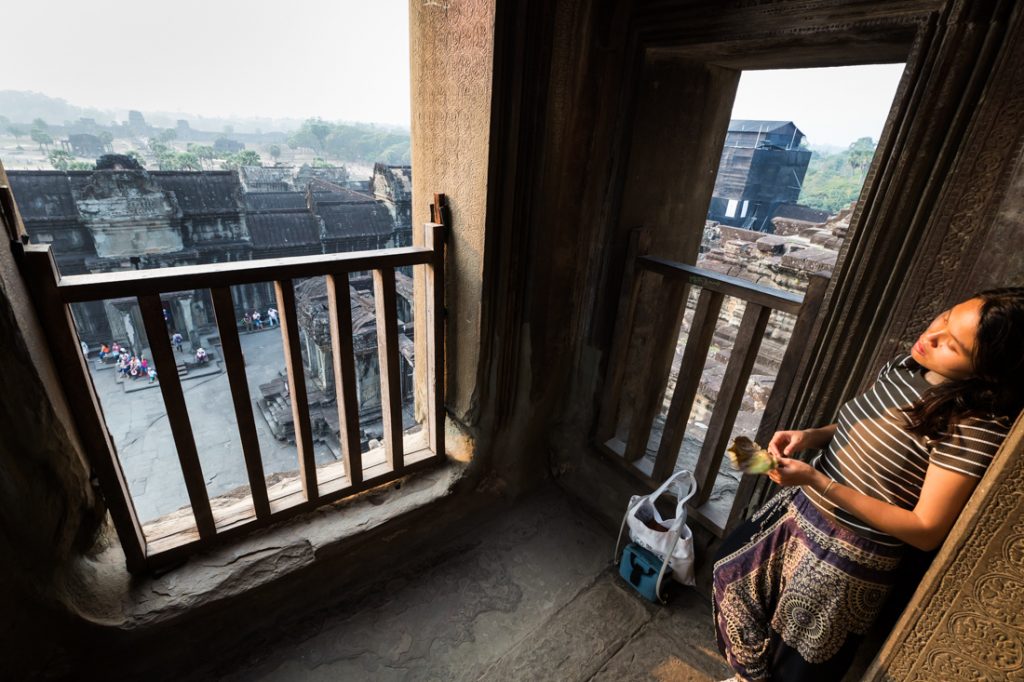
A few tips for your tuk tuk experience: since you’ll be leaving early in the morning to reach the temples by sunrise, make sure you set your pick up time with your driver the night before. Have your driver’s cell phone number on hand so that you can reach your driver in case of emergency. And yes, you should purchase a Cambodian sim card at the airport. Internet and cell service in Southeast Asia is cheap, and definitely worth the $20 fee.
For any of the temples located far outside the Angkor Wat complex (Banteay Srei, Koh Ker, Beng Melea, etc.) you will need to hire a driver with an automobile, not a tuk tuk. The trip is long and the roads are bad. The trip to these temples would be very uncomfortable in a tuk tuk. Trust me, those things have no shock absorbers.
And by the way, I didn’t bother with a guide. I was there to take photos, not a history tour. There are amazing guides who really know there stuff, but there are also guides who seemed to be just making it up as they went along. I didn’t want to have anyone slowing me down as I went here, there, and everywhere taking photos. I read about everything ahead of time, but then want to be free to wander alone with my camera. Judge for yourself, but that’s my travel style.
Angkor Wat Travel Tips: Sunrise is Sh*t
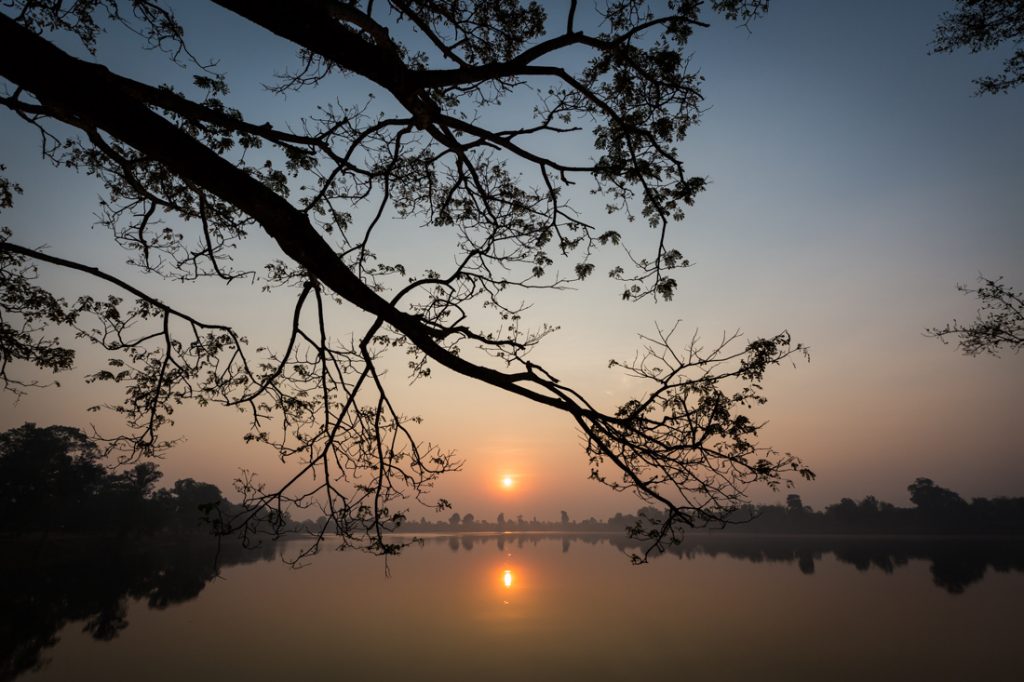
When I start to plan any trip, I normally begin with a Google image search. The photos I found of Angkor Wat at sunrise were truly amazing. Big puffy clouds with lots of color in the sky. Those photos are complete bullshit. These sunrise photos were either taken years ago before the pollution and haze hit the level I experienced during my trip, or there is another time during the year during which the smog is less intense. During my trip in February, there was a constant, filthy haze in the air. Much like my trip to India in 2008, The air pollution translated into a lack of distinct clouds. The resulting sunrises and sunsets were simply an overall change in sky color, but that’s it. I tried every day for a good sunrise, and was out of luck each time. May you have a better sunrise/sunset experience than I did, or simply tell me what time of year I should have visited Cambodia.

Angkor Wat Travel Tips: Getting Past the Crowds and Timing

Crowds are an inevitable evil when visiting Angkor Wat. There is only one Angkor Wat, and millions of people who want to visit. To put things in perspective, a recent article in the Phnom Penh Post said that the number of visitors in 2017 2.5 million – a 12% increase in visitors from 2016. Just accept the fact that you will never have the temples all to yourself, and you should be fine. The temples I found to be the most crowded during my visit were the Angkor Wat temple, Bayon, and Ta Prohm. The trick to getting around the crowds is to arrive early. And when I say early, I mean at least an hour before sunrise that you can stake your spot. Seriously. I’m not kidding. If you arrive at the main Angkor Wat temple for sunrise at 6:00 a.m., you are out of luck. There will already be thousands of tourists blocking your precious, perfect sunrise photo because most of them are only going to visit Angkor Wat for one day and they HAVE to be there for sunrise. What’s ironic is that after sunrise, the tourists all go back to their hotels for breakfast and you will have much more room to move.

In terms of timing, these temples are deemed best for sunrise
- Angkor Wat
- Pre Rup
- Ta Prohm
- Phnom Bakheng
- Srah Srang
- Bayon
- East Mebon
These temples are deemed the best for sunset
- Angkor Wat
- Pre Rup
- Phnom Bakheng

For a lot of the smaller temples that are located deep within the jungle, such as Ta Nei, the time of day you visit doesn’t really matter since the overhead tree cover discounts any rays of the sun. I’ll have a separate post going temple-by-temple with a list of any issues I encountered. In the meantime, I would break your trip into the following groups:
Day 1: Angkor Wat to Bayon
Day 2: Srah Srang to Ta Nei
Day 3: Preah Khan to Pre Rup
Angkor Wat Travel Tips: Visiting the Distant Temples

I visited Siem Reap for seven days and still did not see every temple in the Angkor Wat complex. That should tell you the enormity of the area. The temples most visited beyond the main Angkor Wat temple complex nearest to the city of Siem Reap are Banteay Srei, Beng Melea, Phnom Kulen, and Koh Ker. Most people visit these temples together as a day trip. I understand that the temples are lovely, but the trip takes all day, and the cost for a car is $100+. Personally, I just didn’t feel that the trip to visit these temples was worth it. These temples simply did not look distinct enough to warrant the steep price tag.
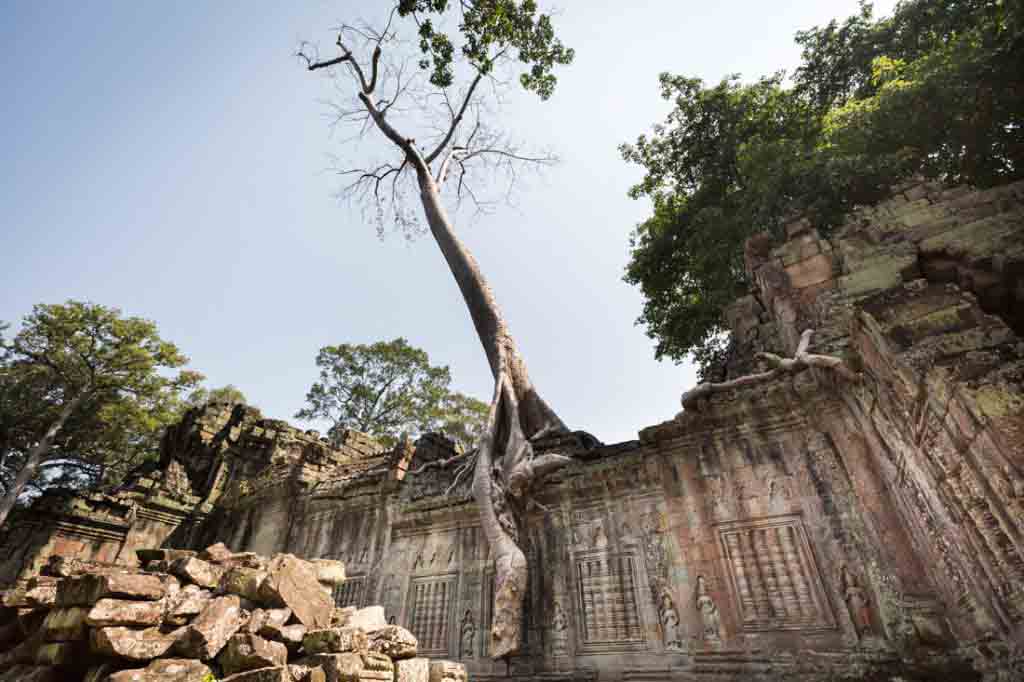
On the other hand, because not as many tourists make the trek to see these temples, if you go then you might have the opportunity to have the place all to yourself. For me, I was starting to get to ‘templed’ out and every structure was starting to look alike. That’s a dangerous zone to be in because it causes you as an artist to stop seeing the beauty right in front of you. I wanted to keep my eyes fresh, and so I would spend the morning at a temple and then go visit another attraction. Beware, fellow photographers, and build in enough breaks when you visit the Angkor Wat temples.
Angkor Wat Travel Tips: What to Bring
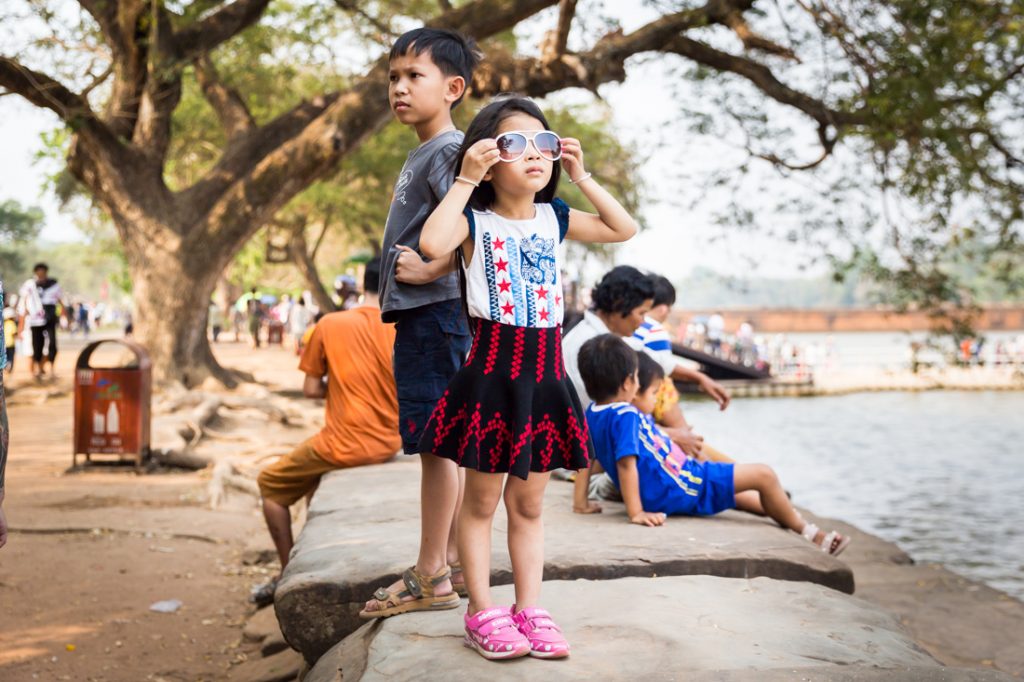
First off, make sure you wear the right clothes. Temple etiquette requires knees and shoulders of women to be covered at all times. While I didn’t see any guards checking passes, no woman was allowed inside if she was wearing shorts. Save yourself some time and always dress accordingly. On my trip I wore a skirt that covered my knees and an overshirt to put over my tank top. The overshirt was breathable and I was comfortable. You are going to be hot no matter what thanks to the humidity so just suck it up. If you don’t wear the right clothes, then you will have to spend time in a separate line to borrow – or worse, pay to rent – a scarf to cover yourself. This rule extends to all of Southeast Asia, by the way.
In terms of the gear I brought, I basically brought everything but the kitchen sink:
- (2) Canon 5D Mark III camera bodies
- Canon 24-70mm f/2.8 lens
- Canon 16-35mm f/2.8 lens
- Canon 70-200mm f/2.8 lens
- Canon 50mm f/2.5 macro lens
- Canon 85mm f/1.8 lens
- Canon EXII flash
- (10?) Canon batteries
- (2) battery chargers
- (35?) CF cards – 8GB to 16GB – Lexar and San Disk only
- 2015 15-inch Macbook Pro laptop
- 4TB Western Digital travel hard drive (failed)
- Card reader
- Dust blower and necessary lens cleaning cloths
- To save on space, I did not bring a tripod or any extra lighting equipment
It’s not like there is a B&H Camera Superstore in Cambodia, so I knew I wanted to have every bit of emergency equipment with me. When I shoot a wedding or a portrait, I always bring a back up camera body just in case of equipment failure. My trip to Southeast Asia was no different, and I packed two bodies with me. To cut down on the amount of gear I carried with me on a daily basis, however, I only brought one camera and left the other body back home in the hotel.
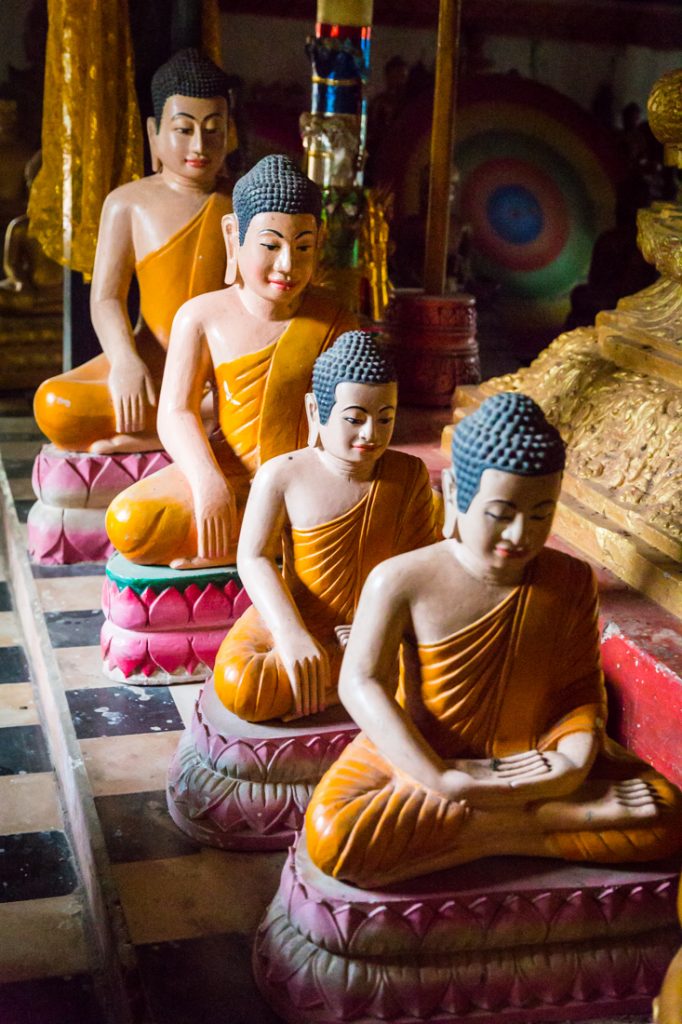
It’s a big pet peeve of mine when someone photographs a spot from only one angle. I wanted to make sure and get wide vistas as well as details, so I brought with me my full kit of lenses. On a daily basis, my 24-70mm f/2.8 lens was my workhorse lens, but my wide-angle 16-35mm and 70-200mm also came in handy. If you’re doing a lot of nature shots, I would recommend a macro lens is well, and I brought with me my 50mm.
I always bring my laptop with me so I can process photos on the road, though you might note I didn’t do much editing during my trip because I was so tired at night. My laptop is a 2015 MacBook Pro, and I brought with me a Western Digital travel hard drive to back up my images. Note that this hard drive failed during my trip, but I have had success with Western Digital hard drives in the past. Also, when I got home I sent the hard drive back to Western Digital and they replaced it immediately. As I mentioned in my previous blog, there are camera stores in Siem Reap, but they are pricey and don’t have the latest equipment. These stores will work in a pinch, such as when your hard drive fails.

In terms of electricity, Cambodia uses 230 V as standard voltage. Outlets require the standard two, cylindrical prongs as found all over Southeast Asia. I had no issues plugging in my laptop, or phone charger, during my entire trip. My Canon battery chargers, however, were a different story. One charger worked, and the other sort of worked. Personally, I have been having lots of problems with Canon battery chargers where they simply don’t seem to fully charge the batteries. I recommend bringing with you at least two battery chargers so that you can charge multiple batteries at one time and so that you have a back up in case one charger fails. To that end, bring more than one plug adapter so that you can have multiple things plugged in at once. You do not need a voltage transformer; your battery and laptop chargers should work without it. Note, however, that my laptop charger seemed to make a hissing noise when plugged in, so I made sure to unplug it when possible. Never leave any electronic items plugged in while you are gone. Nothing happened during this trip, but I just kept expecting to come back to my hotel to find my laptop in flames. On a previous trip to Thailand, I brought with me a power strip as advised on some website. When I plugged in the power strip without anything plugged in to the strip itself, a loud pop sounded and smoke came out of the strip. I’m not sure what happened, but the power strip was dead. Learn from me, grasshoppers: don’t bring a power strip.
In terms of data storage, I brought 35+ cards with me on the trip. For my three-month trip and 10,000 photos later, I didn’t have to erase cards until the very end. I should explain that my personal method is to not erase a card until the images on it have been safely stored in multiple places. When I shoot a wedding, I don’t erase the cards until the photos have been delivered to the client. For this trip, I downloaded all of my images to my laptop as well as to my hard drive, and I also stored images on a pro Dropbox account. I recommend that everyone get online storage so that in case something either happens to your equipment or you have a problem with your cards, your images will be safely stored in the cloud.
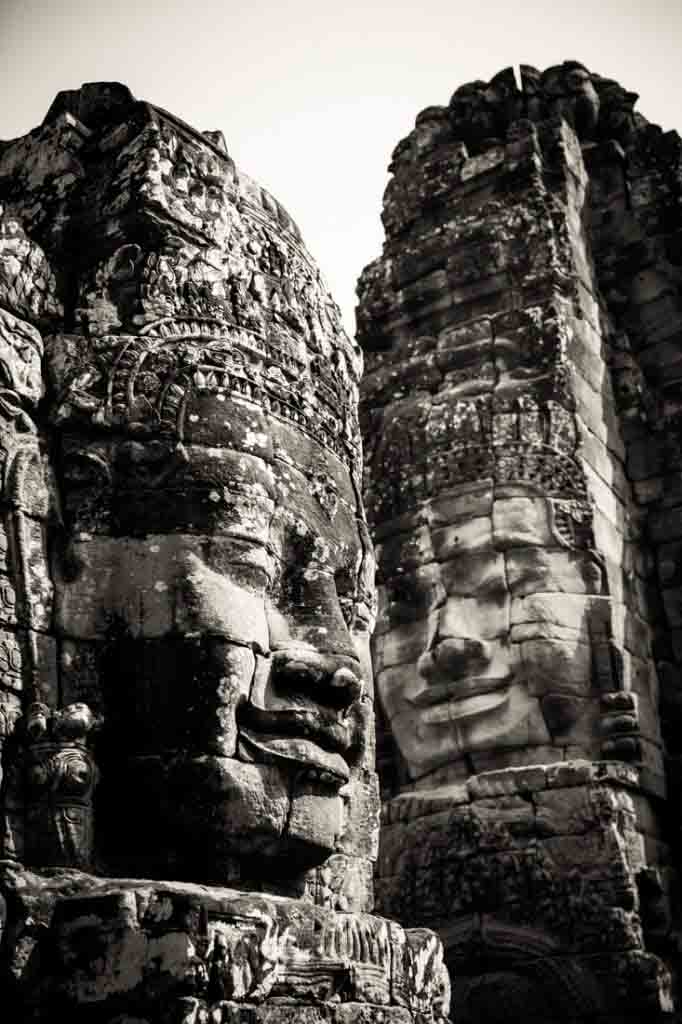
I try to pack as light as possible, and I managed to get all of my equipment into my Kata ‘mini bee’ backpack. For me, traveling means bringing every lens I own plus a change of underwear… and it’s the change of underwear that is negotiable, not the number of lenses. I brought with me a small duffel bag, and this contained a weeks’ worth of clothes and tons of toiletries. If I had to pack all over again, I would’ve taken less toiletries because you can buy everything you need in Asia for much cheaper. Unless you have a brand you can’t give up, rest assured that Johnson and Johnson’s baby powder can be found everywhere on earth. As for clothes, bring a weeks’ worth of clothes and then pay to have laundry done. By the end of the trip you will probably need to throw away your clothes due to the harsh laundry detergent, but your bag won’t be as heavy.

For your daily trips to the temples, I recommend the following:.
- Bring lots and lots of water; vendors by the side of the road are expensive
- Food is virtually nonexistent or really overpriced as you go from temple to temple; bring a snack with you
- Don’t forget to put suntan lotion on your feet and other extremities; I had the weirdest ‘farmer’s tan’ when I returned home that lasted until August
- Bring a sweat rag to wipe off the sweat
- Bring a dust blower to get any dust off your camera and lenses
- Make sure you bring enough batteries and cards for the day; you will be so far out that it will not be feasible to go back to your hotel if you forgot anything.
- There is no electricity or phone service around the temples
Angkor Wat Travel Tips: No Cell Service or Safety Concerns
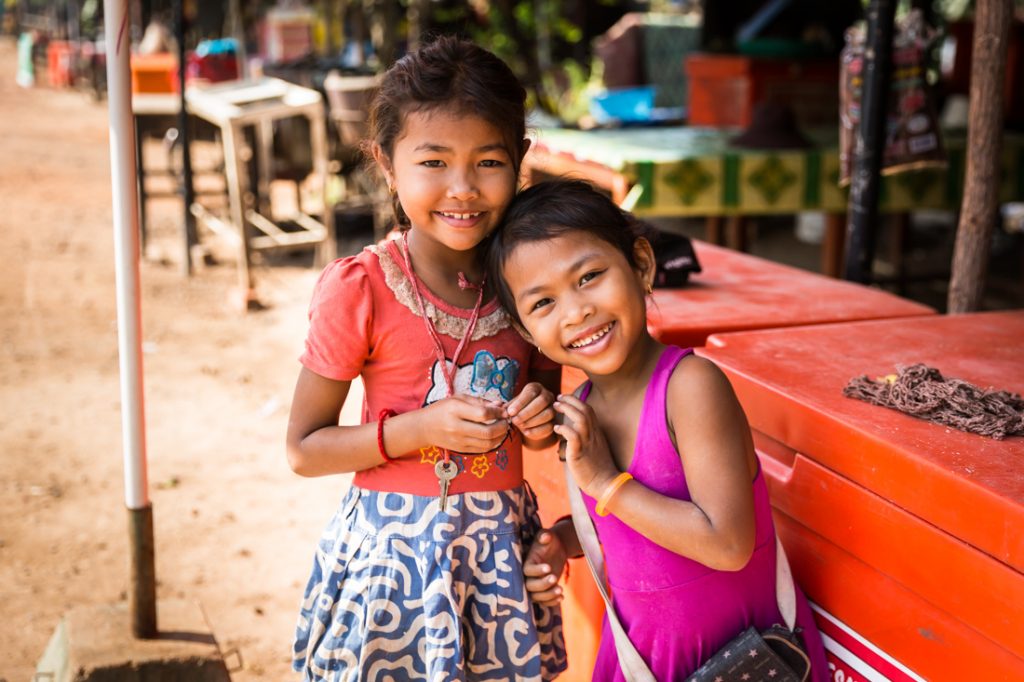
When you travel into the heart of Angkor Wat, you will quickly notice that there are no cell towers in the middle of the jungle. With no cell service comes no accessibility to online maps, so you will have to rely on GPS alone. There are no road signs, and a lot of Google maps is simply vague or missing the smaller trails. If you have a driver, this won’t be a problem, but if you want to explore things on your own then it is annoying. I found that my GPS got a bit dicey as I walked. Research the area you are going to be visiting at your hotel the night prior so you are ready to go in the morning.
In terms of safety, it felt completely safe to walk around everywhere by myself as a lone woman traveler. I’m sure the male tuk tuk drivers thought I was an idiot for walking as much as I did, but no one harassed me. As a woman traveling alone, I felt safe both at the temples and in the city of Siem Reap, day or night. Aside from vendors quoting me outrageous prices and the one tuk tuk driver who drove off with my money, I was safe and would not hesitate to travel to Cambodia on my own again.
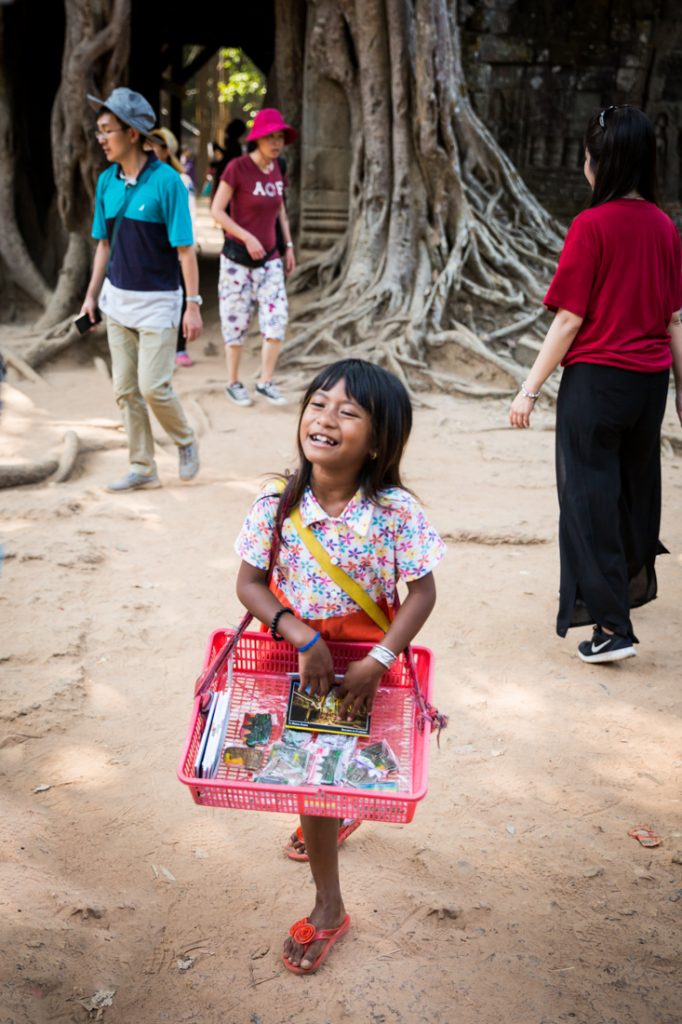
Even though your cell phone won’t be much use in the jungle, I cannot recommend enough picking up a cell phone sim card when you arrive at the airport. Being able to reach your driver in case of emergency the night prior to your visit is invaluable. I went with the Metfone brand, which I read online has the most wide-reaching cell service in Cambodia. The cost for a sim card is around $20, and that will get you unlimited data for a week. It’s a terrific deal, and I had complete service when I was in the town of Siem Reap. I was even able to Pokémon the night away on Pub Street!
Angkor Wat Travel Tips: Final Photographic Thoughts

Make sure you take photos of the Angkor Wat temples from every perspective. You have lots of options with each temple, and while most people settle for the wide shot, don’t forget to get the details as well. If you’re like me and are looking to resell your photos, it is your detail shots that will be the most profitable for you. Any portraits you take and want to resell can only be sold for commercial purposes if a model release has been signed by the subject of the portrait. Good luck with that translation.

Finally, know always that the perfect photo of Angkor Wat at sunrise has already been taken and will never be able to be recreated, at least as long as that much smog hangs in the air. Make your photos your own, and capture the place from the perspective of you, the storyteller. Don’t forget to take the road less traveled and walk around the temples. Some of the most interesting images I captured were not technically of the temples. At Angkor Wat, there was a children’s monastery school located just to the right of the temple. I got some fantastic photos of a little boy being prepared for a performance. Likewise, around the back other side of Angkor Wat is a beautiful lake, which leads to a village with some very photogenic cows. Often a story is best told when you get away from the crowds and find your own path.
Coming up in the next blog: a temple-by-temple breakdown including the unique challenges to each temple
_______________________________________
If you found this article on ‘Angkor Wat Travel Tips’ interesting, then check out some of my other recent posts:
Any recommendations for my next road trip? Drop me a line and let me know where I should head next.
To view more images from my travel and photojournalism portfolio, please visit my website – Kelly-Williams.com

